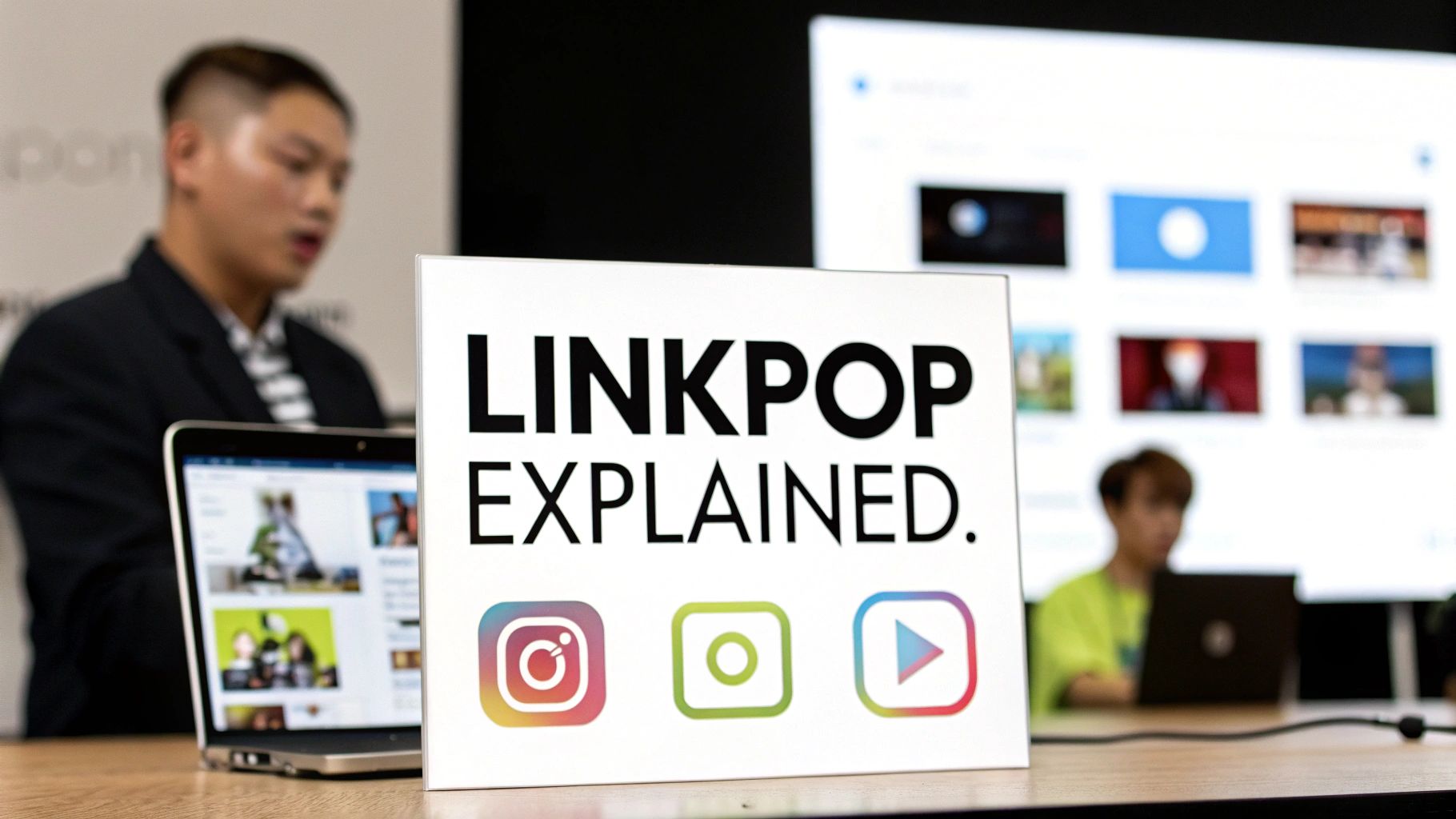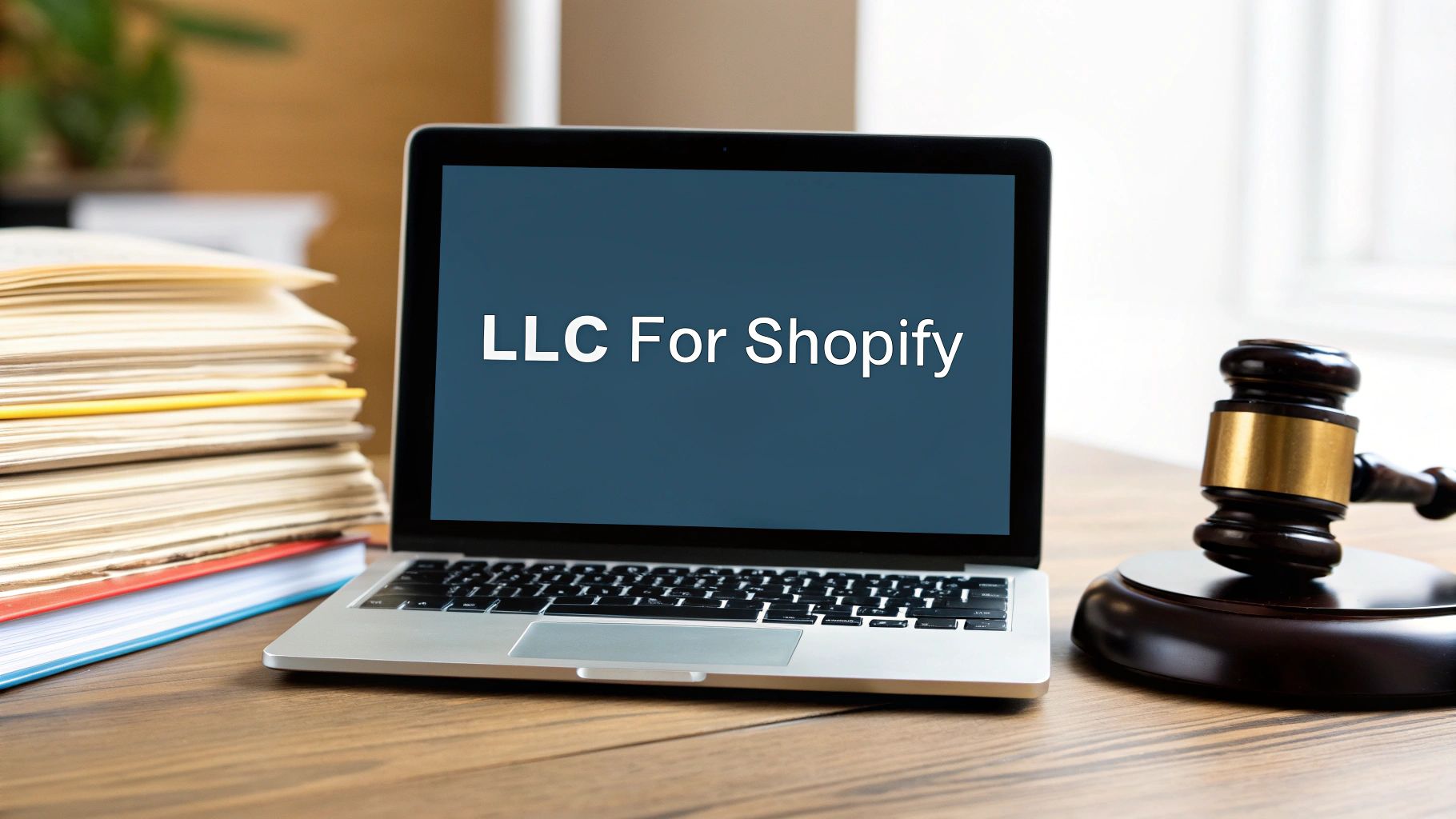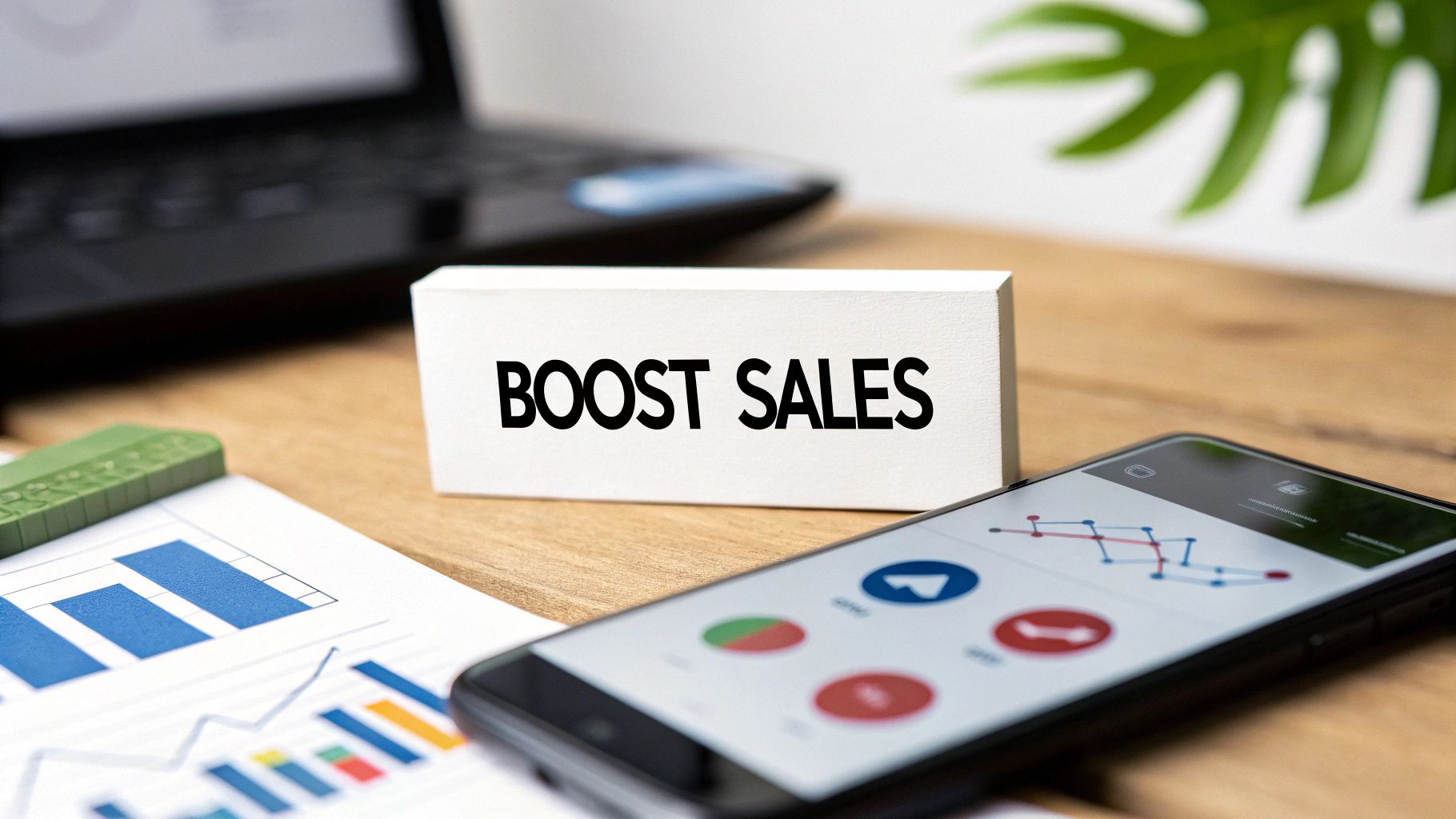Shopify Social Media Integration: Connect FB, IG & TikTok
March 19, 2025
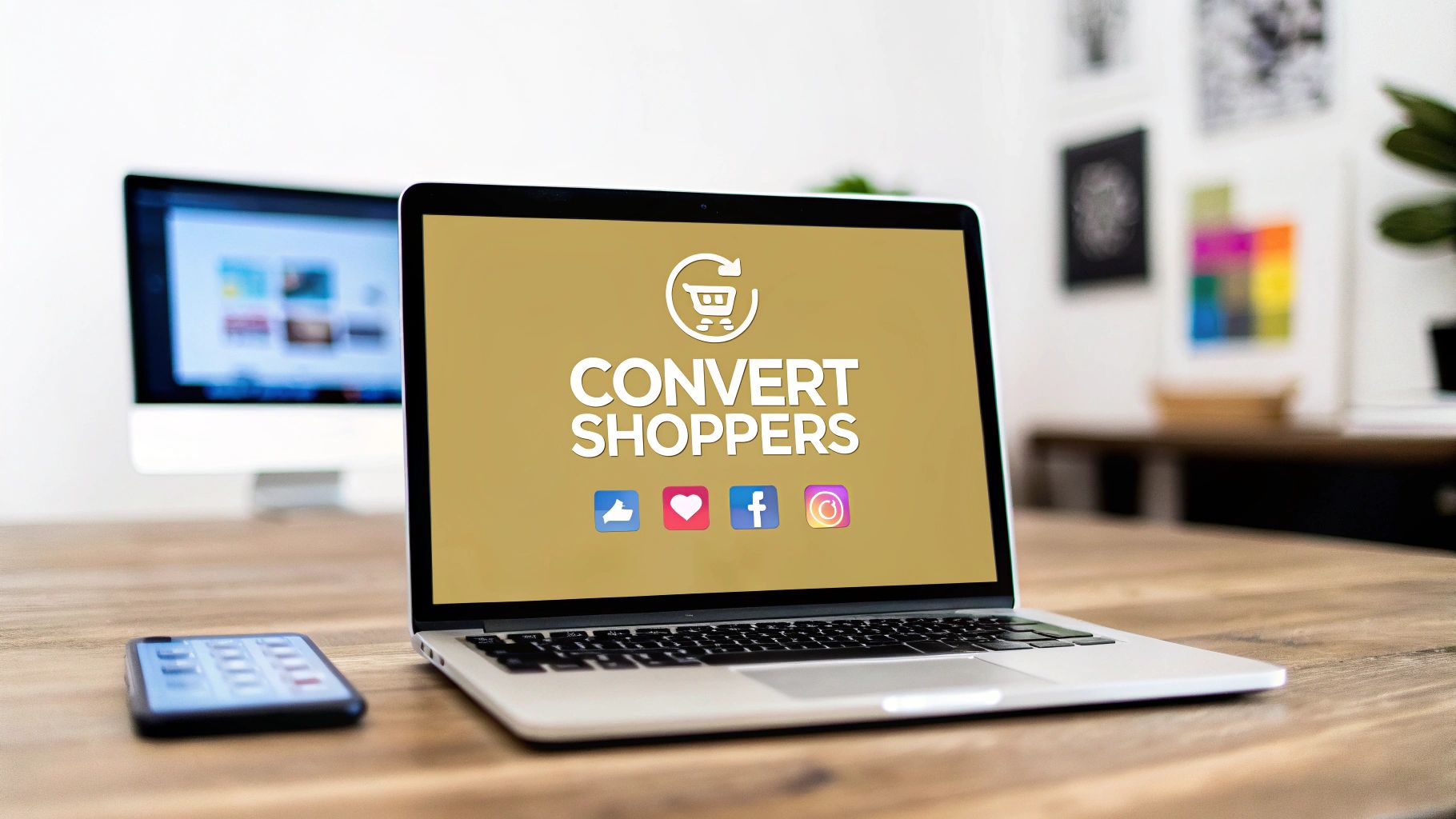
Why Shopify Social Media Integration Is Your Revenue Gamechanger
Disconnected sales channels can quietly hurt your revenue. It's like having several fishing lines in the water, but none of them are set up correctly. You might get a bite now and then, but you're missing out on a much bigger haul. Shopify social media integration is like perfectly rigging those lines, creating multiple ways for customers to find you and efficiently turning those just browsing into buyers.
This integration creates a smooth shopping experience that removes obstacles and boosts sales. Imagine a customer finding your product on Instagram. Instead of leaving the app to go to a separate website, they can buy it right there. This simplified process greatly reduces abandoned shopping carts and increases the chance of a sale. Plus, integrating your Shopify store with social media provides valuable customer data and insights to improve your marketing strategies.
Leveraging the Power of Social Commerce
Shopify social media integration isn't just a fad; it's a major change in how businesses connect with customers. It lets you use the huge power of social media platforms, making them into active sales channels. By syncing your product catalog with platforms like Facebook and Instagram, you can create shoppable posts and ads that turn engagement into profit. This means your social media presence becomes more than just branding; it directly drives sales.
Shopify's integration with social media platforms is increasingly important for businesses that want to reach more people. As of 2024, 77% of businesses are on social media, and 78.6% of Shopify Plus stores use Instagram. This integration lets businesses sync their products with platforms like Facebook and Instagram, creating shoppable posts and ads that streamline shopping. For example, Shopify’s integration with Facebook lets merchants set up customizable Facebook Shops. Customers can view and buy products directly on Facebook. This seamless integration has been key to improving customer engagement and driving sales through social media. Learn more about how Shopify integrates with Instagram here.
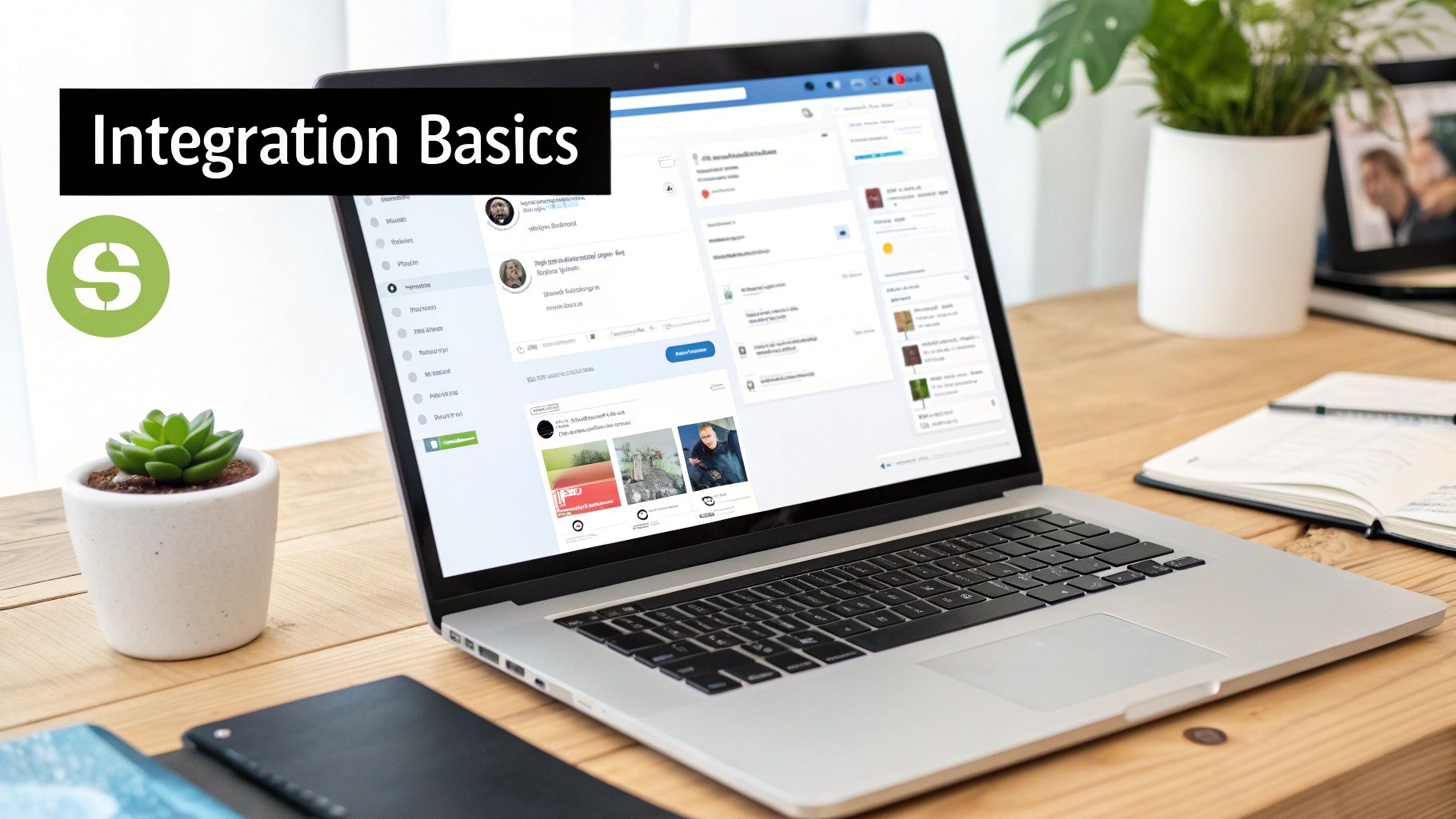
Reducing Purchase Friction for Increased Conversions
One key advantage of streamlined Shopify social media integration is the reduction of purchase friction. Every extra click or step a customer takes to buy something is a chance for them to give up. By allowing purchases directly within social media, you remove these roadblocks and create a smoother, more enjoyable shopping experience. This leads to higher conversion rates and more revenue.
From Browsers to Buyers: Turning Engagement Into Revenue
Effective social media integration turns casual browsers into loyal customers. By showing your products directly in their social media feeds, you grab their attention when they're most engaged. This targeted approach, combined with the streamlined checkout, greatly increases the chance of a purchase. It’s about finding your customers where they are and making it as easy as possible for them to buy. This strategy turns social media engagement into real revenue growth.
Selecting The Right Social Platforms For Your Shopify Store
Integrating your Shopify store with social media is crucial for expanding your reach and driving sales. However, choosing the right platforms is essential. It's about understanding your target audience and where they spend their time online.
Understanding Your Target Audience
Before integrating with any platform, identify your ideal customer. Consider their demographics, interests, and online behavior. For example, if you sell high-end fashion, Instagram might be a better fit than Facebook because of its visual focus and younger demographic. If you're targeting a broader audience, Facebook's wider reach might be more beneficial.
Platform-Specific Strengths And Weaknesses
Each social media platform has its own strengths and weaknesses. Instagram excels at visual storytelling, ideal for products that benefit from high-quality imagery. TikTok’s short-form video format is perfect for product demos and engaging younger audiences. Pinterest’s discovery-focused environment is great for driving traffic to product pages. Read also: How to master selling on Instagram with Shopify.
Matching Platforms To Your Business Goals
Your business goals influence platform selection. If brand awareness is your primary objective, platforms with high organic reach like Instagram and TikTok might be prioritized. If driving direct sales is the goal, platforms with robust shopping features like Facebook and Instagram are excellent choices. These platforms are important for Shopify merchants due to their large user base and engagement potential. Facebook is favored by marketers, with 89% using it for retail social commerce sales. 62% of US social buyers reported making their most recent purchase on Facebook. Integrating Shopify with Facebook allows for automatic product syncing, replicating your store's branding for customers. Find more detailed statistics here.
Evaluating Emerging Platforms
While established platforms offer a proven track record, keeping an eye on emerging platforms is important. New platforms can offer unique opportunities to reach new audiences and experiment with innovative formats. Assess the potential risks and rewards before investing significant resources, considering factors like user growth, engagement rates, and available features.

Prioritizing Your Integration Efforts
Start with the platforms that best align with your target audience, business goals, and product category. This focused approach maximizes your return on investment.
To help you decide, here’s a comparison of popular platforms:
Comparing Social Media Platforms for Shopify Integration
This table compares the key features, benefits, and considerations when integrating different social media platforms with your Shopify store.
| Platform | User Demographics | Integration Features | Best For | Conversion Rate Potential |
|---|---|---|---|---|
| Broad audience, various age groups | Product catalogs, targeted ads, shoppable posts | Reaching a wide audience, driving sales | Medium to High | |
| Younger demographic, visually-driven users | Shoppable posts, influencer marketing, visual storytelling | Visually appealing products, brand building | Medium to High | |
| TikTok | Gen Z and Millennials, short-form video consumers | Creative video content, product demos, influencer collaborations | Reaching younger audiences, viral marketing | Medium |
| Primarily female users, DIY and lifestyle enthusiasts | Product pins, shoppable pins, visual discovery | Products with strong visual appeal, driving traffic | Medium |
Key takeaway: The "best" platform depends on your specific business needs and target audience. Focusing your efforts on the most relevant platforms will yield the best results. Once you've built a strong presence, you can expand to other platforms. By carefully considering these factors, you can create a Shopify social media integration strategy that delivers results.
Setting Up Shopify Social Media Integration That Actually Works
Connecting your Shopify store to social media is more than just a simple setup. This section dives into the often overlooked technical aspects of Shopify social media integration, the details that can truly impact your success. Learn from seasoned merchants and ensure your integrations are performing at their best.
Mastering the Technical Nuances of Integration
Many online tutorials skip over key settings. For example, syncing your product catalog with Facebook isn't as simple as connecting accounts. Consider product categorization, image optimization, and inventory updates. This maintains consistency across platforms and avoids issues like incorrect pricing or out-of-stock items appearing on your social media channels.
Troubleshooting Common Integration Problems
Integration problems can disrupt sales and lead to frustrated customers. A common issue is broken links between your Shopify store and your social media shop. Regularly test these links, just like checking fishing lines for tangles. Also, ensure correct pixel tracking setup to accurately measure the effectiveness of your social media campaigns. This optimizes ad spending and targets the right audience.
Addressing Integration Limitations and Workarounds
Every platform has limitations. Instagram, for example, restricts the types of products sold directly through the app. Understanding these limitations upfront helps with planning. If a needed feature isn't available, explore workarounds. For example, if a platform doesn't support direct checkout for your product category, link to your Shopify product page from your social media posts. This extra step might add a little friction, but it's better than a lost sale.
Best Practices for Maintaining Smooth Connections
Maintaining smooth Shopify social media integration requires consistent attention. Regularly review your integrations, check for updates, and stay informed about platform policy changes. This proactive approach prevents disruptions and ensures your store and social media platforms work seamlessly. Consistent monitoring and fine-tuning maximizes your social commerce potential and drives revenue. Just like a well-maintained fishing rod and reel, proper integration maintenance improves your conversion rates.
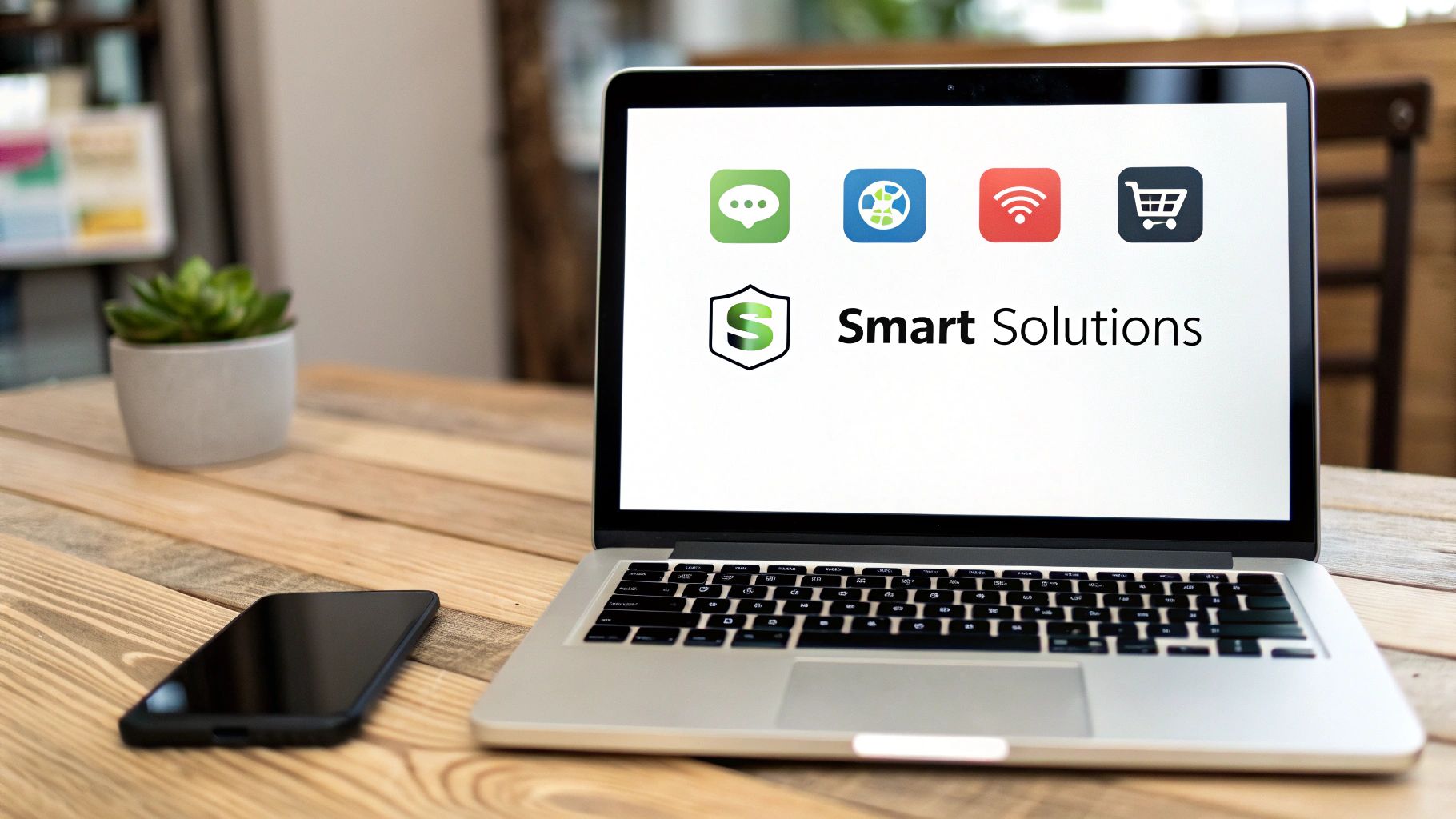
Measuring What Actually Matters in Social Commerce

Many merchants focus on vanity metrics like follower count and likes. These numbers can look good, but they don't always lead to increased sales. This section helps you identify metrics that actually indicate social commerce success for your Shopify store. You might also be interested in learning more about Shopify conversion optimization.
Setting Up Proper Attribution Tracking
Understanding the customer journey is critical. Attribution tracking shows you how customers find your store and what leads them to make a purchase. This means pinpointing which social media platform, ad, or post resulted in a sale.
Proper attribution lets you invest more in what's working. It also helps you spend less on strategies that aren't producing results. This data-driven approach optimizes your budget and improves your return on investment (ROI).
Interpreting Cross-Platform Analytics
Analyzing data across different platforms can be challenging. Focus on metrics directly connected to sales. For instance, track click-through rates (CTR) from your social media posts to your Shopify product pages.
Also, keep an eye on conversion rates on those product pages. These connected metrics show how your social media efforts affect your profits. This focused approach helps you understand the effectiveness of each platform and prioritize your time and resources.
Establishing Meaningful Benchmarks
Comparing your performance to relevant benchmarks helps you understand your success. Don't compare yourself to businesses in unrelated industries. Instead, focus on competitors selling similar products.
This gives you a realistic view of your performance. This analysis also helps identify areas for improvement and ways to outperform the competition. Shopify's social media integration strategy utilizes analytics and performance metrics like follower growth rate, mentions, and brand sentiment. These tools help track social presence and adjust strategies.
Social media analytics tools also offer insights into customer behavior and preferences. This allows merchants to optimize marketing and boost conversion rates. For example, social media generates about 1.81% of referral conversions for Shopify stores. This highlights the potential of targeted social media campaigns. Learn more about social media integration on Shopify.
The following table summarizes key social commerce metrics you should be tracking:
Essential Social Commerce Metrics to Track
This table presents the key performance indicators you should monitor to evaluate the effectiveness of your Shopify social media integration.
| Metric | What It Measures | Target Range | How to Improve | Platform Tools |
|---|---|---|---|---|
| Conversion Rate | Percentage of visitors who complete a purchase | 2-5% | Improve product pages, offer discounts, retargeting campaigns | Shopify Analytics, Google Analytics |
| Click-Through Rate (CTR) | Percentage of people who click on a link in your social media post | 1-3% | Compelling calls to action, eye-catching visuals | Platform-specific analytics (e.g., Facebook Insights, Twitter Analytics) |
| Engagement Rate | Level of interaction with your social media content (likes, comments, shares) | Varies by platform | High-quality content, interactive posts, contests | Platform-specific analytics |
| Reach | Number of unique users who see your content | As large as your target audience | Targeted advertising, influencer marketing | Platform-specific analytics |
| Follower Growth Rate | Rate at which your follower count increases | Positive growth | Engaging content, consistent posting schedule | Platform-specific analytics |
By tracking these metrics, you can gain a deeper understanding of your social commerce performance and make data-driven decisions to improve your results.
Using Insights to Refine Your Approach
Continuously analyze your data and use it to improve your Shopify social media integration strategy. For instance, high engagement on Instagram coupled with low click-through rates suggests you may need to improve your call to action or the link in your bio.
Regularly review and adjust your strategy based on performance data. This process helps you maximize your returns across all connected platforms. Consistent optimization ensures your strategy remains effective and drives revenue growth.
Creating Platform-Specific Content That Drives Conversions
Generic content rarely performs well on different social media platforms. It's like using the same fishing lure for every type of fish. You need a tailored approach for each platform to engage your audience and drive sales through Shopify social media integration.
Tailoring Your Content Strategy for Each Platform
Each social media platform has a unique culture and user expectations. Instagram is visually driven, prioritizing high-quality images and videos. TikTok thrives on short, engaging video content, often with a humorous or trendy feel. Facebook allows for longer text posts and caters to a broader demographic. Understanding these differences is key to creating effective, platform-specific content.
For example, a clothing retailer might post stunning product photos with lifestyle imagery on Instagram. On TikTok, they could create fun videos showcasing different ways to style an outfit. This tailored approach resonates more effectively with each platform's users. Adapting your content ensures you're speaking the right language to the right audience.
Balancing Promotional and Community-Building Content
Promoting your Shopify products is essential, but balance is crucial. You need to mix promotional material with content that builds community. Constantly pushing sales can turn off your audience.
Focus on providing valuable content that your audience enjoys. This could include behind-the-scenes glimpses of your business, helpful tips related to your products, or engaging questions that spark conversation. This approach builds trust and fosters a loyal following.
Creating Effective Content Calendars
Planning your content in advance with a content calendar is essential for consistency. This calendar should align with key shopping seasons and promotional events. For example, plan engaging content around Black Friday, Cyber Monday, and the holiday season to maximize sales.
A content calendar also helps maintain a consistent posting schedule, vital for audience engagement. This consistency reminds followers of your brand and keeps your products top-of-mind. A well-planned calendar keeps content fresh and relevant, driving continuous engagement.
Encouraging Authentic User-Generated Content
User-generated content (UGC) is incredibly valuable for social proof. Encourage your customers to share photos and videos of themselves using your products. This provides authentic testimonials that resonate more deeply with potential buyers.
You can encourage UGC by running contests, offering incentives, or simply reposting customer content. This provides valuable social proof and strengthens your connection with your audience, turning customers into brand advocates.
Maintaining Brand Consistency Across Platforms
While adapting your content is important, maintain brand consistency. Your brand's voice, values, and visual identity should be recognizable across all social media channels. This builds brand recognition and reinforces your message.
For example, if your brand is known for its quirky humor, incorporate that humor into your posts on all platforms, whether it's through witty captions on Instagram or funny skits on TikTok. This creates a cohesive brand experience for your customers. Mastering these techniques transforms your Shopify social media integration strategy into a powerful tool for driving conversions and building a loyal customer base.
Advanced Social Commerce Tactics That Top Merchants Use
Successfully integrating your Shopify store with social media goes beyond simply setting up a Facebook Shop or adding an Instagram feed. Top merchants employ advanced tactics to create truly engaging shopping experiences that convert browsers into buyers. Think of it like fishing: the right lure and technique will attract the right fish, leading to a bigger catch.
Retargeting Campaigns That Reconnect With Store Visitors
Retargeting is invaluable for re-engaging customers who've shown interest but haven't purchased. For instance, if a customer adds an item to their cart but abandons it, you can display ads for that specific item on their social media feeds. This gentle reminder can entice them to complete the purchase, reclaiming lost sales and boosting conversion rates.
Platform-Specific Loyalty Programs
Smart merchants use platform-specific loyalty programs to cultivate customer relationships. Offering exclusive discounts or early access to new products for your Instagram followers, for example, encourages engagement and repeat purchases. This builds a sense of community and fosters loyalty.
Social-Only Promotions
Social-only promotions create urgency and exclusivity. A limited-time discount code or a special giveaway exclusively for your social media followers encourages immediate action and drives sales. It's also a great way to reward your most engaged followers and strengthen their connection with your brand.
Conversational Commerce Through Messaging Platforms
Conversational commerce, through platforms like Facebook Messenger and Instagram Direct, provides personalized service and builds relationships. Answering questions, recommending products, and offering support directly through messaging apps fosters trust and influences purchasing decisions. This direct interaction also provides valuable customer insights.
Leveraging Social Proof Throughout the Customer Journey
Showcasing social proof, such as customer reviews and testimonials, builds credibility and encourages purchases. Integrating these into your social media posts and product pages demonstrates the value and quality of your offerings. It’s like word-of-mouth marketing, amplified by the reach of social media.
Custom API Integrations for Unique Shopping Experiences
While Shopify integrates seamlessly with major social platforms, some merchants utilize custom API integrations. This allows for unique shopping experiences that stand out from the competition. A custom integration could enable product personalization directly within a social media app or offer augmented reality (AR) experiences.
By implementing these advanced tactics, your Shopify social media integration becomes a powerful engine for growth. These strategies not only increase sales but also cultivate a loyal customer base and strengthen your brand.
Ready to transform your Shopify store’s social media presence? LinkShop, a powerful link-in-bio app for Shopify merchants, helps you create beautiful, shoppable landing pages. Learn more at LinkShop.
